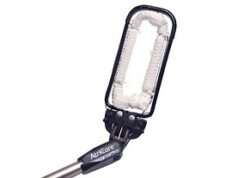
A retrospective study conducting a safety assessment and comparison between two percutaneous devices commonly used for left atrial appendage (LAA) closure in the US has shown a significant increase in reported safety events following US FDA approval of the Watchman (Boston Scientific) device. The study by Jazayeri et al was published in the Journal of Cardiovascular Electrophysiology last week.
The study analysed data for the Watchman as well as the Lariat (SentreHEART) device from the FDA Manufacturer and User Facility Device Experience (MAUDE) database in the period 2009–2016. The comparative analysis also showed that the cumulative incidence rate of major complications—including stroke or transient ischaemic attack (TIA), pericardiocentesis, cardiac surgery and death—occurred more frequently with Watchman than with the Lariat (1.93% vs. 1.15%; p=0.001), although there was no significant difference specifically for mortality.
Surgical closure of the LAA is a viable option for treatment of atrial fibrillation (AF), particularly for AF patients with intolerance or contraindication to oral anticoagulants, as well as elevated stroke risk. As new strategies for percutaneous LAA closure have emerged, and with Watchman and Lariat as the only two devices currently approved by the FDA for use in the USA, this study sought to evaluate and compare the safety of those devices.
Drawing from 356 unique and relevant medical device reports available in the MAUDE database for the period 2009–2016, the cumulative incidence of safety events for each device was compared to the total cases where LAA closure was performed with Lariat or Watchman. The results, which indicated lower rates of reported events following LAA closure with Lariat than with Watchman devices, also revealed that for both devices, “quite a few” reported safety events that followed shortly after FDA approval and adoption into clinical practice.
For Watchman, comparing the composite of reported major complications experienced pre- and post-approval showed a significant increase in event rates. 5,849 Watchman procedures were performed in the USA during the study period, with a cumulative incidence of reported events at 8.1%. A clear uptick in events following FDA approval in 2015 for the Watchman can be observed in the temporal trends in complications including death, stroke/TIA, pericardiocentesis and urgent surgery, going 1-7 events per year to a total 88 events in 2015, and 35 events in 2016.
A steep learning curve
The study offers a possible explanation for the phenomenon, observing that the trend of increased complications following device approval may vary depending on different approval pathways. Lariat received 510(k) approval for soft tissue ligation and off-label use for LAA closure, while the Watchman device went through the FDA pre-market approval pathway. Consequently, the study notes, “the Lariat was consistently used by a group of operators who gained experience over time”, while the Watchman “opened up for implantation by all operators that may have resulted in higher complications due to the steep learning curve”.
One of the authors of the study, Dhanunjaya Lakkireddy (University of Kansas Hospital, Kansas City, USA) spoke to Cardiac Rhythm News, emphasising that “transition from research phase to clinical implementation has to be handled properly. Because the device moves from the hands of a limited, highly skilled operators and experienced support staff to a large number of institutions with operators that are less skilled in the given procedure supported by less experienced staff. We need to figure out a way to make this learning curve shorter and less steep.”
Although based on reports in the FDA MAUDE database, the study concluded that the database itself was flawed in its limited and superficial view of a device’s safety profile. The reports are split between mandatory reports and voluntary reports, with the database showing “clear discrepancies” and lack of information in the database. More rigorous post-approval studies as well as registry participation was recommended in order to improve the feedback mechanism and detection of important safety signals.
To further improve the process of implementing recently approved medical devices for use in LAA closures, the study suggests that operator training may play an important role in reducing incidence rates.

“Robust educational and training requirements are probably a key to minimizing the post market release complication spikes”, Lakkireddy says. “A mandate from FDA and a solid implementation plan from the device manufacturer will be critical. An appropriate appraisal of operator skills and phased roll-out with close monitoring of outcomes will be a good start.”
Lakkireddy points out that networks and opportunities for training and effective knowledge distribution are already available. “There are several educational opportunities like the International Symposium on LAA (ISLAA) that are held on an annual basis, where the new as well as experienced operators can avail to improve their overall understanding of the LAA science and learn from the shared experience of operators from all over the world.”










